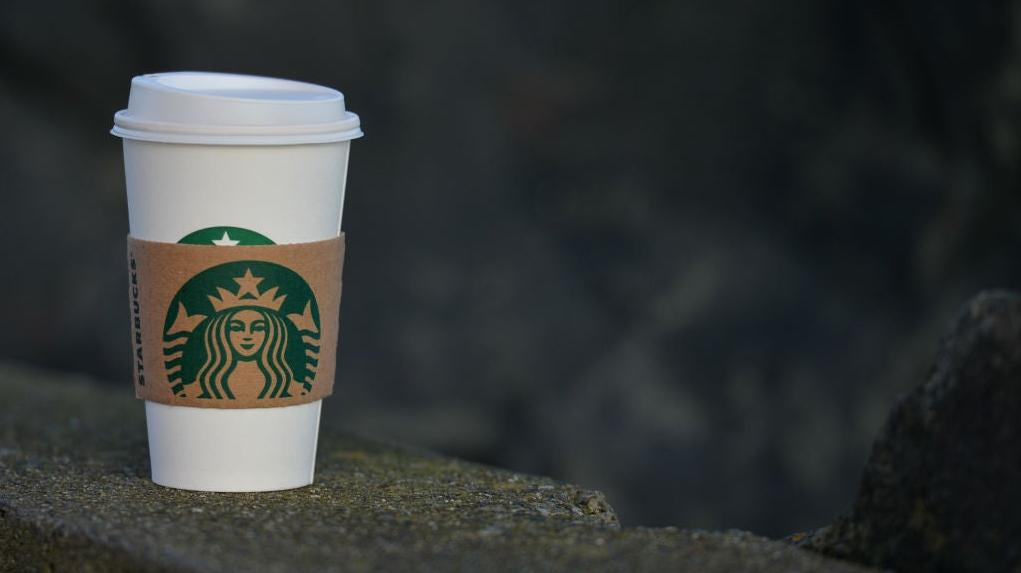Will Starbucks' New Cup Rules Actually Help The Environment?
In a move toward sustainability, Starbucks is encouraging customers bring their own cups.
Those white paper cups emblazoned with the green Starbucks siren (as Starbucks calls her) may eventually be a thing of the past. Or that's what the headlines would have you believe. CNN reports that the coffee chain is working on finding a way to allow all customers to bring in their own cups by 2025. Starbucks is hoping to use as few of those white paper cups as possible, and as a stretch goal, maybe eliminate them altogether—by hoping we remember to bring our own cups, that is.
Is Starbucks getting rid of paper cups?
To be clear, Starbucks isn't getting rid of its paper and/or plastic cups anytime soon. Instead, the company just wants to make disposable cups the less ideal option for customers. The plan is to let customers bring and use their own drinking vessels at every Starbucks in the U.S. and Canada by the end of next year, regardless of whether they're using the drive-thru or even ordering ahead of time.
To accomplish this, Starbucks will likely have to employ a multi-faceted approach. The chain has already tested out a "borrow-a-cup" pilot program in Seattle in which customers paid a deposit of $1 per cup. When the customer returned the cup to a special bin at each Starbucks location, they'd get the $1 deposit back while also earning rewards.
The reusable cups are made of lightweight polypropylene and, unlike the regular Starbucks paper cups, are recyclable. In case you're wondering, the Seattle Starbucks employees didn't have to wash all of those borrowed cups; instead, a third-party vendor picked them up, washed them, and returned them.
Can you bring your own mug to Starbucks?
Customers in Seattle were receptive to the borrow-a-cup idea. A manager of one of the testing locations said that many customers asked about the drop-off bin for the reusable cups, which helped to drum up additional interest in the program.
While the borrow-a-cup plan is still being tested out for kinks, the chain has also revived a program where customers are allowed to bring in their own mugs to stores, a policy that was suspended during the height of the pandemic for health and safety reasons. Starbucks typically takes 10 cents off your order when you use your own mug, but to incentivize the bring-your-own model, the cashier will now take 50 cents off those orders, and the company is also testing out a disposable cup fee.
Of course, this raises the question of how to let people use their own cups via the drive-thru, or when they order ahead on the mobile app. Starbucks has mock stores set up to test out scenarios to see what works best, whether it's having customers hand over their cups at the drive-thru window or presenting the cup to an employee at an earlier point in the ordering process, to save extra time.
Will these cup changes make Starbucks more sustainable?
I'm generally not a cynic, but you know how stubborn people are when it comes to change, no matter how small the change might be. There are a lot of moving parts here. While Starbucks can make it more enticing and easier to have customers bring in their own mugs, say, it places the full responsibility on the customers to adhere to the practice.
Plus, there are a hundred little issues that might arise here. Like, what if a customer brings in a dirty cup? Does the Starbucks employee refuse to use it, for, say, liability concerns, or do they wash it for the customer (adding extra time), then fulfill the order? And if the employee gives a customer the wrong order, does the customer then have to hand the mug back, too? And, here's the big thing: If you're visiting Starbucks on a busy day full of errands, are you really going to want to lug a mug or thermos around town with you? Probably not—so you might decide to eat the disposable cup fee and end up increasing Starbucks' profits in the process.
These are all complicated logistics. The whole Starbucks model is based on speed and convenience, and any move to make the model more sustainable might inevitably drag those down. While it's all a well-intentioned move to reduce waste, I have a feeling it's going to take a long, long time to get customers on board these programs. Plus, I can already picture the complaints employees are going to have to field about all this.
